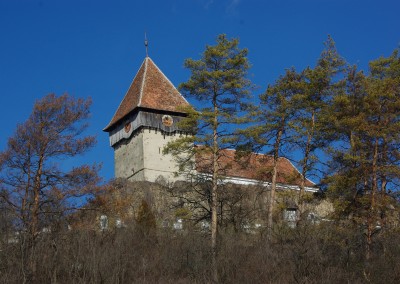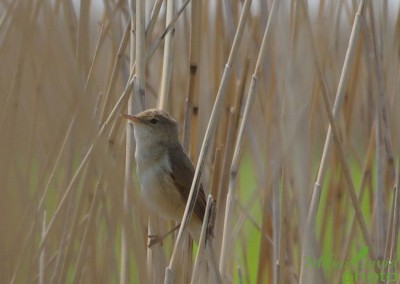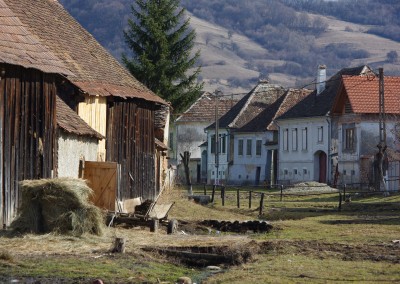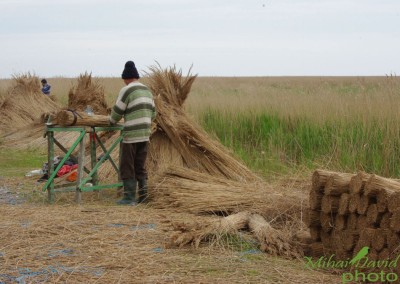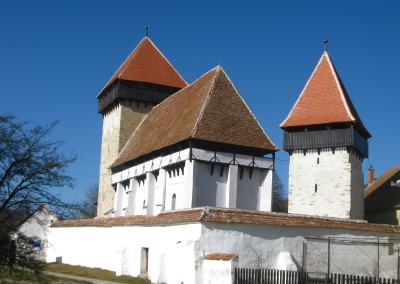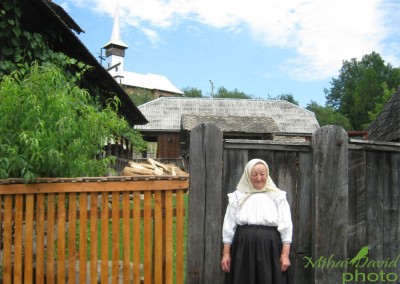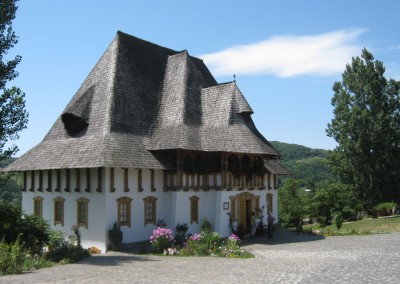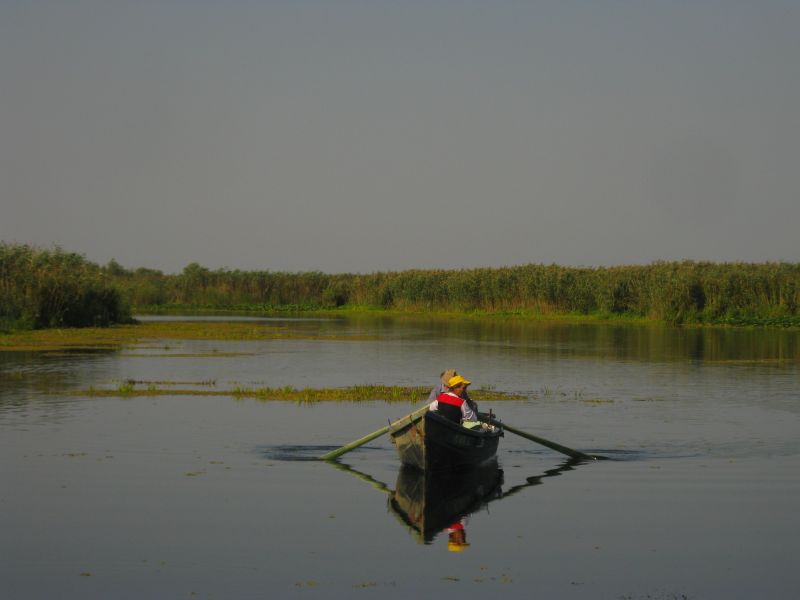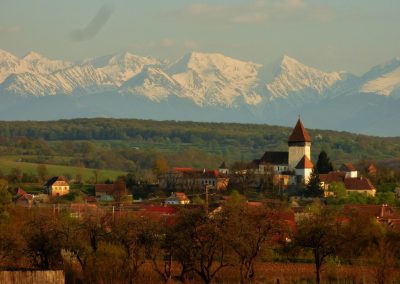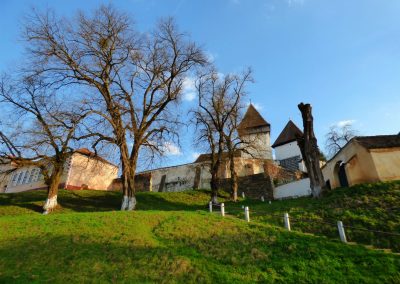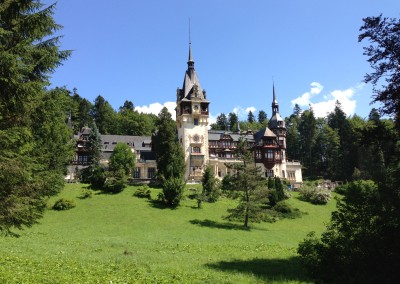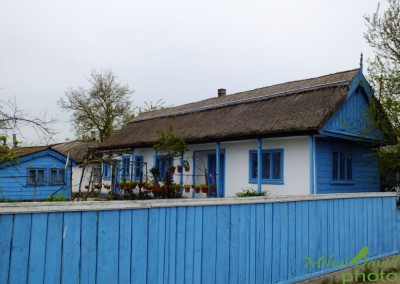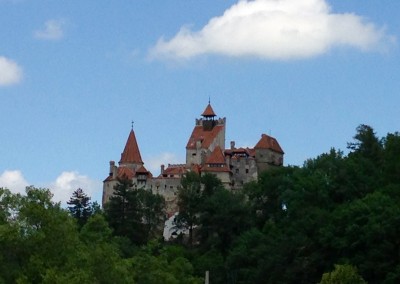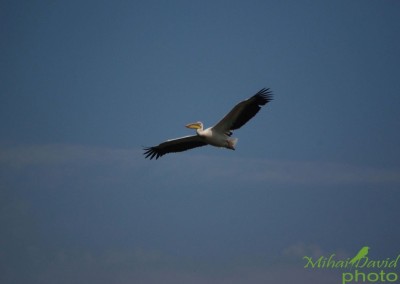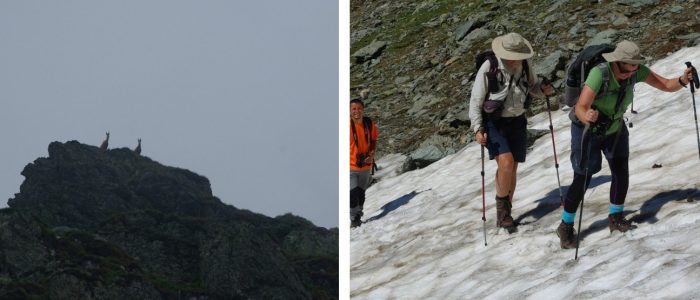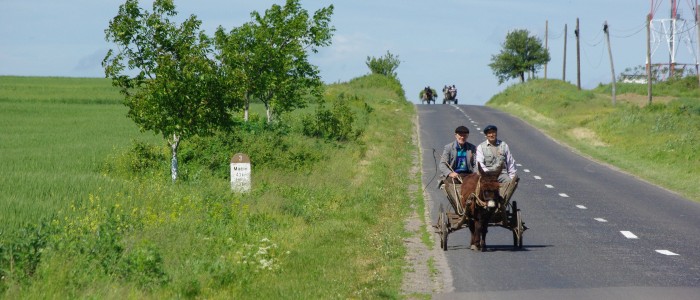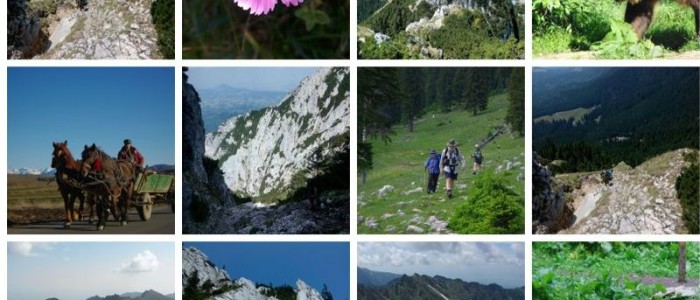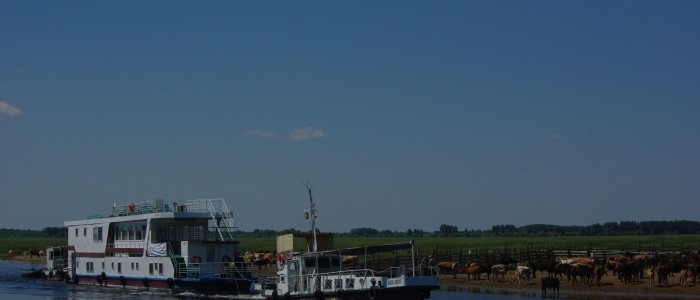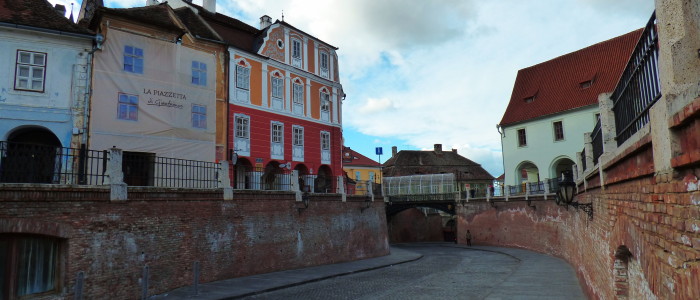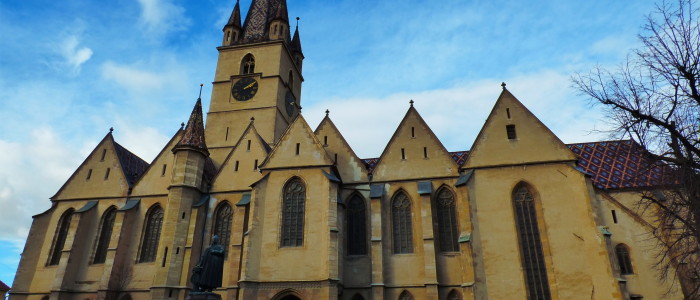Wouldn’t it be nice to be able to visit everything a country has to offer? A large tour of Romania taking you to every place you’ve heard of?
Most probably that will require several weeks if not months. But we suggest you try our version of a broader tour of the country that highlights 3 important regions of the country.
We are encouraging slow travel, in small groups, so that you enjoy a personal experience. We won’t promise, neither will we organise a tour in one week that brings you everywhere. Even if that would physically be possible, it’s not compatible with our tourism principles.
But we do offer you the possibility of seeing more than just one region on a tour that takes less than two weeks. Three most appealing regions of Romania, each of them with UNESCO Sites and many more landmarks.
The roads will bring us through cultural and natural landscapes. We’ll learn about the multi-ethnic history and traditions of the Danube Delta, Bucovina and Transylvania. We’ll taste the local cuisine and experience some long-forgotten crafts that are still practised here in the everyday life.
Visits
- the Danube Delta Biosphere Reserve (UNESCO World Heritage) and the virgin forest of Letea
- the painted monasteries of Bucovina: Voronet, Moldovita, Sucevita and Humor (UNESCO World Heritage sites)
- guided tours of the old towns of Sighisoara, Sibiu and Bucharest
- crossing through protected areas like: N2000 Hartibaciu Plateau, N2000 Fagaras Piemont and Piatra Craiului (Kingstone) National Park
- the fortified church from Biertan (UNESCO World Heritage)
- bearwatching hide
- Zarnesti Gorges
- Bran Castle and Rasnov citadel
Anyway, those are just a few highlights. Being a Grand tour of Romania, some extra gems can be discovered along our path!
Program
Day 1: On this first day we will have a transfer to Tulcea, the gate of Danube Delta. Here the Danube splits into three arms and a whole labyrinth of channels, lakes, reed islands and willow forests. Consequently, after flowing for almost 3000 Km between the Black Forest and the Black Sea it finally goes into the sea through the delta branches.
Accommodation at Guesthouse 4* in Tulcea.
The Danube Delta
Day 2 – 4: Our Grand Tour of Romania begins today with the delta adventure. For the following three days we will venture on secondary branches towards the heart of the delta.
The Delta, as you might have already heard, is a paradise for birdwatching. For this reason, don’t forget to put the binoculars in when you are packing.
The Danube Delta comprises a vast complex of reed beds, willow forest, and wetland, crossed by an intricate network of channels. We will explore a wide variety of habitats mainly with our small excursion boat.
Typical birdlife sightings include feeding Glossy Ibis, Egrets, Herons, and Cormorants. They can gather in impressive numbers where the water levels are low. Large flocks of White Pelicans glide serenely overhead. Meanwhile, in the shallower channels, Kingfishers are ubiquitous and Common Sandpipers, Green Sandpipers and Greenshanks feed along the banks.
The reeds fringing the waterways contain families of Penduline Tits and other reed bed species (including Little Bittern). Raptors will include frequent sightings of Marsh Harriers whilst the Red-footed Falcons will be seen in small groups hunting insects. From time to time, White-tailed Eagles can also be seen either gliding in the air or perched on branches.
All those species might be observed while travelling by boat towards Letea forest. This is a virgin forest with some oaks dating over 800 years. Before reaching the forest we will leave the boat in Letea village, the oldest in the delta. It’s a settlement with typical houses with thatched roofs and blue painted windows. The lifestyle of the delta’s residents is fascinating to see, with waterborne transport the only viable way of getting around and fishing as the predominant source of income. A visit to the delta is an unforgettable experience in every aspect.
***
The accommodation during these days will be on a floating hotel 4* for groups over 12 or guesthouses 3-4* in the scarce Danube delta villages for smaller groups.
The daily itinerary shown here should be considered as an example of what we might do as local conditions (e.g. weather, water depth in the channels) will determine our exact course.
Bucovina, the second episode of our Grand Tour of Romania: the painted monasteries
Day 5: Today we leave the Danube Delta behind and we head towards the Moldavian region-a landscape, architecture and traditions change. Bucovina is a part of the old province of Moldavia that was included in the Habsburg Empire for a period of time.
Located on the northern border of Romania, Bucovina is a mountainous region whose peaks and forests of beech and pine shelter gently sloping valleys. Here, during the short period of a quarter of a century, between 1522 and 1547, a group of churches sprang up. Frescoed with a liberality and magnificence, similar art is not to be found in any other country. Some of the churches are included in the UNESCO Heritage.
Accommodation at Guesthouse 3-4* near the painted Voronet Monastery- (Gura Humorului).
Day 6: We visit the painted monasteries of Voronet, Moldovita, Sucevita and Humor. All of them are under the protection of the UNESCO World Heritage program. The Voronet Monastery is one of the most beautiful orthodox monasteries in Europe, also being called the Sixtine of the East. It impresses through the famous and unique colour tone, the Voronet blue, and the dramatic fresco of the western wall.
The painted monasteries are covered within and without in vivid, minutely detailed frescoes whose colours remain fresh and strong after centuries. They have been compared to Persian carpets or to jewels set in cases of green grass and flowers within their severe enclosures. That they have survived to this day, despite the passage of time, wars, invasions, and the vandalism of rival religions or ideologies, is a little sort of miraculous.
Accommodation at Guesthouse 3-4*.
Transylvania, part three of the Grand Tour of Romania: the fortified churches and citadels
Day 7: Transfer over the Tihuta Pass towards Sighișoara.The city of Sighisoara played an important strategic and commercial role at the edges of Central Europe for several centuries. Sighisoara became one of the most important cities of Transylvania, with artisans from throughout the Holy Roman Empire visiting the settlement. The German artisans and craftsmen dominated the urban economy, and also built the fortifications to protect it.
Nowadays, the old town within the citadel’s walls is the best-preserved medieval settlement. Therefore it was included in the UNESCO World Heritage program.
Accommodation at a Guesthouse 3-4*.
Day 8: One of the main attractions of the day is the fortified church of Biertan which is also included in UNESCO World Heritage Sites. Throughout the centuries Biertan played an important role in the history of Transylvania. The Biertan fortified church was the seat of the Lutheran Evangelical Bishop in Transylvania between 1572 and 1867.
We’ll then travel further towards Sibiu through the Hartibaciu Valley-the second-largest Natura2000 Site after Danube Delta. The region is home to many old Saxon villages each guarded by its own fortified church. Here many of the traditional crafts are still being practised.
In the evening we’ll arrive in Sibiu where we’ll have dinner and accommodation at a Guesthouse 3-4*.
Day 9: Today we’ll visit the old town of Sibiu which alongside Luxembourg was the European cultural capital in 2007. Sibiu is one of the 7 fortified citadels(“Siebenburgen”) built by the German Saxons – a medieval city dating since 1191. It’s 4 belts of fortifications can still be seen today. Within them, narrow streets surrounded by Gothic houses lead toward the “Upper Town” to the baroque buildings bordering the famous squares where most of the landmarks and monuments are. After lunch we depart to Zarnesti, at the edge of the Piatra Craiului National Park.
Accommodation and dinner at Guesthouse 3* in Zarnesti/Magura or Vulcan.
Day 10: In the first part of the day we visit the Gorges of Zarnesti, Magura village and the surrounding National Park’s forests, the places where the “Large Carnivores Project” took place. In the evening: bear observation in a bear hide in the depths of the Transylvanian woods.
Accommodation and dinner at Guesthouse 3* in Zarnesti/Magura or Vulcan.
And a little bit of the capital city
Day 11: On our last full day of the Grand Tour of Romania we leave for Bucharest. But on our way we stop to visit the Bran and Rasnov castles, which are watching over the Transylvanian border.
Bucharest became the state capital of Romania in 1862. Under those circumstances it steadily consolidated its position as the centre of the Romanian mass media, culture and arts. Its eclectic architecture is a mix of historical, interwar, Communist-era, and modern. In the period between the two World Wars, the city’s elegant architecture and the sophistication of its elite earned Bucharest the nickname of the “Paris of the East” or “Little Paris” (Micul Paris).
Although many buildings and districts in the historic centre were damaged or destroyed by war, earthquakes and Ceausescu’s program of systematization, a significant bit survived. In recent years, the city has been experiencing an economic and cultural boom.
After the city tour we’ll have dinner and accommodation in Bucharest.
Day 12:
Transfer to the airport.
Extended Tour
Extensions are possible.
Check out our other tours. Extra days and activities can be added to this tour.
It can also be extended by combining it with tours in other areas.
This Grand Tour of Romania can be adjusted as per your interest.
Difficulty level
It will be mostly walking with a few short and easy hikes on some days.
Reservations
This tour is recommended to be booked at least 3 weeks in advance.
Prices
The final price is influenced by many factors that not all depend on us.
Please contact us to get your detailed customized program and offer.
The price usually includes all tour expenses starting with your arrival in the country. Meaning:
- Wildlife and cultural specialized guide
- 11 nights accommodation
- 11 dinners, 11 breakfasts
- Lunches will be mainly served as picnics or sandwiches, fruits, nuts, snacks
- Luggage transfer between accommodations
- Car transfers
- Admittance to the bearhide, national park and biosphere reserve
- Guided tour of Sibiu
The price will not include the entry fees to the landmarks to be visited and photo taxes.
The offer you will receive can be adjusted if you choose to modify some of the details.
Extra info
Other transfers are also possible if you intend to stay longer after our tour together.


